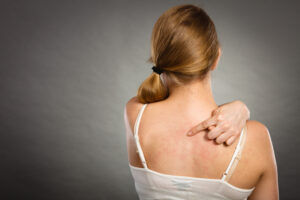Rosacea Treatment in Denver, CO
This common skin concern often begins with a tendency to blush or flush more easily than other people. The redness can slowly spread beyond the nose and cheeks to the forehead and chin. Even the ears, chest, and back can be red all the time.
Rosacea can cause more than redness. There are so many signs and symptoms that rosacea has four subtypes:
 Erythematotelangiectatic rosacea: Redness, flushing, visible blood vessels.
Erythematotelangiectatic rosacea: Redness, flushing, visible blood vessels.- Papulopustular rosacea: Redness, swelling, and acne-like breakouts.
- Phymatous rosacea: Skin thickens and has a bumpy texture.
- Ocular rosacea: Eyes red and irritated, eyelids can be swollen, and the person may have what looks like a sty.
At Forefront Dermatology, formerly Asarch Dermatology, we will determine which type of Rosacea you are dealing with and then employ one or a combination of the following treatments: topical medication, emollient to repair the skin, antibiotics, laser or light treatments.
Contact Us Today For A Consultation
What Causes Rosacea?
An exact cause for rosacea has not been determined. However, studies suggest that common rosacea symptoms like flushing and redness related to the exaggerated dilation of facial blood vessels. When blood vessels dilate, a higher-than-normal amount of blood sits near the surface of the skin. While a cause is not known, studies have provided us with clues regarding what can trigger a flare-up of rosacea symptoms. This allows doctors and patients to work together to manage this chronic condition.
Is Rosacea hereditary?
 Evidence does suggest that there may be a hereditary influence in the occurrence of rosacea. More than half of diagnosed patients have at least one family member who has exhibited similar symptoms. Data from case analysis suggests that genes, ethnicity, and environmental factors all contribute to the development of this condition.
Evidence does suggest that there may be a hereditary influence in the occurrence of rosacea. More than half of diagnosed patients have at least one family member who has exhibited similar symptoms. Data from case analysis suggests that genes, ethnicity, and environmental factors all contribute to the development of this condition.
How Long Does Rosacea Last?
Rosacea is a chronic disorder. Patients are likely to experience remissions and relapses in the form of flare-ups. In one study, researchers identified that 52% of patients diagnosed with rosacea demonstrated symptoms for a duration of 13 years. The average duration of rosacea found in this study was 9 years. There is presently no cure for rosacea, but several medical therapies have been developed to manage symptoms. Studies have demonstrated that current therapies are effective at controlling flare-ups as well as reducing instances of recurrence.
Is rosacea contagious?
Rosacea is not considered an infectious disease. People do not contract this condition through skin contact nor from breathing airborne pathogens. This can be misunderstood because doctors often prescribe antibiotics for rosacea patients. The relevance of antibiotics for rosacea seems to relate to an anti-inflammatory effect rather than the capacity to destroy bacteria.
Can you get rosacea on other parts of your body other than the face?
 Rosacea most commonly occurs on the face, affecting the cheeks, nose, forehead, and even the eyes. Although uncommon, cases of rosacea flare-ups have been reported on the scalp, neck, chest, and back. No instances of rosacea below the upper torso have been reported.
Rosacea most commonly occurs on the face, affecting the cheeks, nose, forehead, and even the eyes. Although uncommon, cases of rosacea flare-ups have been reported on the scalp, neck, chest, and back. No instances of rosacea below the upper torso have been reported.
Are there any medical risks associated with rosacea treatment?
Rosacea treatments are developed based on the symptoms each patient is experiencing. Some patients require treatment only for redness and flushing while others have a need to address the thickening of the skin, pimples, bumps, and other symptoms. When rosacea affects the eyes, the patient may need to consult with an ophthalmologist as well as a dermatologist to ensure the most effective therapeutic modalities are explored.
-
-
- Oral and/or topical therapy may be prescribed for patients with bumps and pimples. Topical prescriptions may also help reduce redness. A variety of medications are currently available for the treatment of rosacea, including sulfur drugs that enhance the effects of antibiotics and cardiovascular medication that may keep severe flushing under control.
- Laser or other modalities may be performed to reduce severe redness or eliminate visible blood vessels. Vascular lasers emit specific wavelengths of light that get absorbed by tiny superficial blood vessels. The heat that is absorbed causes the vessels to break down.
- Vascular laser treatment may also disrupt the buildup of excess tissue that causes disfigurement of the nose.
- Instances of ocular rosacea may require antibiotics as well as other ophthalmic therapy.
- In addition to medical interventions, patients with rosacea benefit from identifying and avoiding dietary and environmental factors that contribute to flare-ups.
-
Limited information is available regarding rosacea and associated medical risks. Small studies suggest a connection between this skin condition and migraine headaches, Crohn’s disease, heart disease, diabetes, and Alzheimer’s disease. However, much more research is needed to determine the realistic possibilities of these associations. Dermatologists report that many people with rosacea never develop secondary conditions, so it cannot be said with certainty that risks exist or to what extent, if they did.
Schedule A Consultation
The signs and symptoms of rosacea require thorough investigation. Patients of Forefront Dermatology, formerly Asarch Dermatology For Dermatology, Laser, & Mohs Surgery can expect to receive dermatologic care that addresses their unique needs. To schedule a consultation with one of our providers, call 303-761-7797. We serve Englewood, Castle Rock, Lakewood, CO, and surrounding areas.
